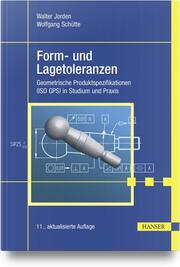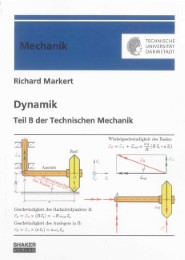Operator's Guide to Process Compressors
eBook
Bibliographische Informationen
Format: PDF
Digitale Rechteverwaltung: Adobe DRM
Beschreibung
The perfect primer for anyone responsible for operating or maintaining process gas compressors.
Gas compressors tend to be the largest, most costly, and most critical machines employed in chemical and gas transfer processes. Since they tend to have the greatest effect on the reliability of processes they power, compressors typically receive the most scrutiny of all the machinery among the general population of processing equipment. To prevent unwanted compressor failures from occurring, operators must be taught how their equipment should operate and how each installation is different from one another.
The ultimate purpose of this book is to teach those who work in process settings more about gas compressors, so they can start up and operate them correctly and monitor their condition with more confidence. Some may regard compressor technology as too broad and complex a topic for operating personnel to fully understand, but the author has distilled this vast body of knowledge into some key, easy to understand lessons for the reader to study at his or her own pace.
This groundbreaking new work is a must-have for any engineer, operator, or manager working with process compressors.
The main goals of this book are to:
Explain important theories and concepts about gases and compression processes with a minimum of mathematicsIdentify key compressor components and explain how they affect reliabilityExplain how centrifugal compressors, reciprocating compressors, and screw compressors function.Explain key operating factors that affect reliabilityIntroduce the reader to basic troubleshooting methodologiesIntroduce operators to proven field inspection techniquesImprove the confidence of personnel operating compressors by teaching them the basics of compressor theoryImprove compressor reliability plantwide by teaching operating and inspection best practicesImprove communication between operating and supporting plant personnel by providing a common vocabulary of compressor termsHelp processing plants avoid costly failures by teaching operators how to identify early compressor issues during field inspectionsAutorenportrait
Robert X. Perez is mechanical engineer with more than 40 years of rotating equipment experience in the petrochemical industry. He has worked in petroleum refineries, chemical facilities, and gas processing plants. Currently, he provides engineering consulting services and rotating equipment training. He earned a BSME degree from Texas A&M University at College Station, an MSME degree from the University of Texas at Austin and holds a Texas PE license. Mr. Perez has written numerous machinery reliability articles for magazines and conferences proceedings and has authored 4 books and coauthored 4 books related to machinery reliability. He resides in San Antonio, Texas.
Inhalt
Preface xv
1 Introduction to Gases 1
1.1 Ideal Gases 4
1.2 Properties of Gases 5
1.3 Temperature 5
1.4 Pressure 6
1.5 Gas Laws 7
1.6 Gas Mixtures 10
1.6.1 Daltons Law of Partial Pressures 10
1.7 Molecular Weight of a Gas Mixture 11
1.8 Gas Density 13
1.9 Density of Mixtures 14
1.10 Heat of Compression 15
2 Commonly Used Compressor Flow Terms 19
2.1 Ideal Gas Law 20
2.1.1 Example of How to Convert from SCFM to ACFM 22
2.2 Visualizing Gas Flow 23
2.3 Compressibility Factor (Z) 25
2.4 Sizing Compressors 27
3 Compression Processes 31
3.1 Adiabatic Compression 33
3.2 Polytropic Compression 37
3.2.1 Polytropic Example #1 40
3.2.2 Polytropic Example 2 40
4 What Role the Compression Ratio Plays in Compressor Design and Selection 43
4.1 Compression Ratio versus Discharge Temperature 44
4.2 Design Temperature Margin 46
4.2.1 Design Trade-Offs 49
5 An Introduction to Compressor Operations 53
5.1 Compression Basics 53
5.2 Defining Gas Flow 55
5.3 Compressor Types 56
5.4 Multistaging 59
5.5 Key Reliability Indicators 60
6 Centrifugal Compressors 63
6.1 Centrifugal Compressor Piping Arrangements 66
6.2 Start-Up Configuration 68
6.3 Centrifugal Compressor Horsepower 68
6.4 Troubleshooting Tips 70
6.5 Centrifugal Compressor Start-Ups 71
6.6 Centrifugal Compressor Checklist 72
7 How Process Changes Affect Centrifugal Compressor Performance 75
7.1 Baseball Pitcher Analogy 75
7.2 How Gas Density Affects Horsepower 78
7.3 Theory versus Practice 80
8 How to Read a Centrifugal Compressor Performance Map 83
8.1 The Anatomy of a Compressor Map 85
8.1.1 Flow Axis (See Figures 8.2 and 8.3) 85
8.1.2 Head or Pressure Ratio Axis (See Figures 8.2 and 8.3) 86
8.1.3 Predicted Surge Line (See Figures 8.2 and 8.3) 86
8.1.4 Predicted Capacity Limit (Figures 8.2 and 8.3) 86
8.1.5 Surge Margin (See Figure 8.2) 87
8.1.6 Speed Lines (See Figures 8.2 and 8.3) 88
8.2 Design Conditions 88
9 Keeping Your Centrifugal Compressor Out of Harms Way 91
9.1 Compressor Operating Limits 93
9.2 Compressor Flow Limits 93
9.3 Critical Speeds 95
9.4 Horsepower Limits 96
9.5 Temperatures 97
10 Troubleshooting Centrifugal Compressors in Process Services 101
10.1 The Field Troubleshooting ProcessStep by Step 105
10.1.1 Step 1: Define the Problem 105
10.1.2 Step 2: Collect All Pertinent Data 105
10.1.3 Step 3: Analyze the Body of Data as a Whole 106
10.1.4 Step 4: Act and Confirm 106
10.2 The Hourglass Approach to Troubleshooting 108
10.3 Thinking and Acting Globally 109
10.4 Troubleshooting Matrix and Table 110
10.5 Centrifugal Compressor Troubleshooting Example 110
11 Reciprocating Compressors 117
11.1 Reciprocating Compressor Installations 124
11.1.1 How Process Conditions Affect Reciprocating Compressor Performance 126
11.2 Reciprocating Compressor Start-Ups 128
11.3 Reciprocating Compressor Checklist 129
11.4 Criticality 131
12 Troubleshooting Reciprocating Compressors in Process Services 133
12.1 The Field Troubleshooting ProcessStep by Step 137
12.1.1 Step 1: Define the Problem 137
12.1.2 Step 2: Collect All Pertinent Data 137
12.1.3 Step 3: Analyze the Body of Data as a Whole 138
12.1.4 Step 4: Act and Confirm 138
12.1.5 Troubleshooting Matrix and Table 140
12.1.6 Reciprocating Compressor Troubleshooting Example 140
13 Screw Compressors 147
13.1 Oil Injected Screw Compressors 150
13.2 Screw Compressor Modulation 151
13.3 Pressure Pulsation Issues 152
13.3.1 Absorptive Type Dampeners 154
13.3.2 Reactive Type Dampeners 154
13.3.3 Combination Type (Reactive and Absorptive) 154
13.3.4 Oil Contamination 155
13.3.5 How Process Conditions Affect Screw Compressor Performance 156
13.4 Troubleshooting Screw Compressors 156
14 Compressor Start-Up Procedures 159
14.1 Compressor Start-Up Risks 160
14.2 Generic Start-Up Procedure 162
14.3 Centrifugal Compressor Start-Ups 165
14.4 Reciprocating Compressor Start-Ups 167
14.5 Screw Compressor Start-Ups 170
15 Compressor Trains: Drivers, Speed Modifiers, and Driven Machines 173
15.1 Driven Process Machines 174
15.1.1 Drivers 175
15.1.1.1 AC Electric Motors 176
15.1.2 Steam Turbines 177
15.2 Gas Turbines 178
15.2.1 Natural Gas Engines 179
15.2.2 Speed Modifiers 180
15.2.2.1 Gear Boxes 180
15.3 Useful Gearbox Facts 182
15.4 Combination Machines 182
15.4.1 Turboexpanders 182
16 Compressor Components 185
16.1 Bearing Types 185
16.2 Rolling Element Bearings 187
16.3 Plain Bearings 188
16.4 Compressor Bearings 189
16.5 Modeling Fluid Film Bearings 190
16.6 Thrust Loads 192
16.7 Kingsbury Thrust Bearing 193
16.8 Compressor Seals 194
16.8.1 Labyrinth Seals 194
16.8.2 Oil Film Seal 194
16.8.3 Face Contact Wet Seals 196
16.9 Seal Oil System 197
16.10 Dry Gas Seals 197
16.11 Seal Gas Quality and Control 198
16.12 Reciprocating Compressors Packing 199
17 The Importance of Lubrication 201
17.1 Lubrication Regimes 203
17.2 Lubricating Oils 206
17.3 Compressor Lubricating Oil Systems 206
17.3.1 Lubrication Monitoring 209
17.4 Oil Foaming 210
17.4.1 Excessive Foam 211
18 Inspection Ideas for Operators and Field Personnel 213
18.1 Equipment Field Inspections 213
18.1.1 Audible Inspections 215
18.1.2 Visual Inspections 216
18.1.3 Tactile Inspections 217
18.1.4 Smell 219
18.2 Tools Available to Quantify What You Have Detected 220
18.2.1 Audible Inspection Methods 220
18.2.1.1 Ultrasonic Gun 220
18.2.1.2 Stethoscope 220
18.2.1.3 Metal Rod 220
18.3 Visual Inspection Methods 221
18.3.1 Infrared or IR Gun 221
18.4 IR Camera 222
18.4.1 Strobe Light 223
18.5 Inspection Methods Using Vibration and Temperature Measurement Equipment 224
18.5.1 Vibration Meter with Accelerometer 224
18.5.2 Temperature Measurement Equipment 226
18.6 Generic Monitoring Guidelines 227
19 Addressing Reciprocating Compressor Piping Vibration Problems: Design Ideas, Field Audit Tips, and Proven Solutions 229
19.1 Piping Restraints 232
19.2 Pipe Clamping Systems 233
19.3 Guidelines 233
19.4 Piping Assessment Steps 235
19.4.1 First, Perform the Following Pre-Field Analysis Steps 235
19.4.2 Next 235
19.4.3 Problem Locations 236
19.5 Attaching Pipe Clamps to Structural Members 237
19.5.1 Installation Examples 240
19.5.2 Here Are a Few More Pipe Clamp Tips 240
20 Collecting and Assessing Piping Vibration 243
20.1 Piping Analysis Steps 245
20.2 Piping Vibration Examples 246
Appendix A: Practice Problems Related to Chapters 1 Through 4 Topics 249
Appendix B: Glossary of Compressor Technology Terms 261
Index 273
E-Book Informationen
Um die PocketBook Cloud zu aktivieren, loggen Sie sich bitte in Ihrem Kundenkonto ein und gehen dort in den Bereich „E-Books“. Setzen Sie hier einen Haken bei „Neue E-Book-Käufe automatisch zu meiner Cloud hinzufügen.“. Dadurch wird ein PocketBook Cloud Konto für Sie angelegt. Die Zugangsdaten sind dabei dieselben wie die Ihres Kundenkontos in diesem Webshop.
Weitere Informationen zur PocketBook Cloud finden Sie unter www.meinpocketbook.de.
Allgemeine E-Book-Informationen
E-Books in diesem Webshop können in den Dateiformaten EPUB und PDF vorliegen und können ggf. mit einem Kopierschutz versehen sein. Sie finden die entsprechenden Informationen in der Detailansicht des jeweiligen Titels.
E-Books ohne Kopierschutz oder mit einem digitalen Wasserzeichen können Sie problemlos auf Ihr Gerät übertragen. Sie müssen lediglich die Kompatibilität mit Ihrem Gerät prüfen.
Um E-Books, die mit Adobe DRM geschützt sind, auf Ihr Lesegerät zu übertragen, benötigen Sie zusätzlich eine Adobe ID und die kostenlose Software Adobe® Digital Editions, wo Sie Ihre Adobe ID hinterlegen müssen. Beim Herunterladen eines mit Adobe DRM geschützten E-Books erhalten Sie zunächst eine .acsm-Datei, die Sie in Adobe® Digital Editions öffnen müssen. Durch diesen Prozess wird das E-Book mit Ihrer Adobe-ID verknüpft und in Adobe® Digital Editions geöffnet.
Weitere Artikel des Autors "Perez, Robert X"
Lieferbar innerhalb 1 - 2 Wochen

Lieferbar innerhalb 1 - 2 Wochen

Lieferbar innerhalb 1 - 2 Wochen

Herunterladen

Weitere Artikel aus der Kategorie "Technik/Maschinenbau, Fertigungstechnik"
Sofort lieferbar

Nicht lieferbar

Nicht lieferbar

Lieferbar innerhalb 1 - 2 Wochen

Noch nicht lieferbar













